If there is one culinary delicacy that sets Spain apart from the rest of the world it is undoubtedly Jamon Serrano. The art form they employ to make this cured and air dried pork, particularly the Iberico de Bellota grade known as Pata Negra (named after the pigs discerning black hoof) is as rare as it is expensive due to the lengthy and costly production process. Although the Iberico de Bellota grade (made up of at least 75% Iberian breed exclusively fed on acorns) is the cream of the crop there are other more common and moderately priced alternatives. The next best is Iberico de Recebo, which is a grade of pig fed on a combination of acorn, vegetation, and grains. The last of the Iberico hams is Iberico de Pienso, which is exclusively fed on grains. Today, Spaniards enjoy eating all grades of Jamon Serrano on a daily basis whether at home with the family or at a tapas bar with friends. In fact, there are cafes and restaurants that solely serve this delicacy with the hams hanging from ceilings and walls. The hams are also displayed on a stand called a Jamonera, in a position perfect for slicing which is in itself considered an Art. Spanish enthusiasm for pork stems in part from its past importance as a symbol of cultural identity with the first written references dating back to the Roman Empire. Historical accounts of their religious wars against the Moors and Jews, who did not eat pork, gave Spaniards the opportunity to see pork consumption as almost a symbol of their Catholicism.
On a trip to Spain I was fortunate enough to experience the production of Jamon Iberico de Bellota – the most expensive and prized ham in the world! I visited a very small town named Guijuelo, just outside of Salamanca which is an hour and a half drive Northwest of Madrid. Thanks to my parents and the Guerrero’s (my extended family from Madrid), I had the special honor of receiving a private tour of the Don Saturnino factory, a family run business since 1948 that specializes in the world famous Iberico de Bellota grade. Don Saturnino is the only Spanish company specialized in Iberian ham that is approved in the United States. Don Saturnino General Manager, Francisco “Pacito” Guerrero, picked me and my friend Dr. Brandon Gutierrez (a veterinarian who offered great insight to the experience) at the town bus station. Our first stop was at the butchering plant where an 18 wheeler just pulled up carrying 150 pigs from the farm. As the herd of pigs made their way into the plant, there was a noticeable difference between the black Iberico breed from Spain and another reddish brown colored breed from the United States known as the Duroc. Pacito explained that the cross-breeding practices are utilized for several reasons. It costs less to feed the Duroc breed and they are leaner than the Iberico breed so they help produce a higher yield of product (i.e. less fat). Dr. Gutierrez further explained that the “Duroc breed has a better birth rate than the Iberico due to the mothers ability to maintain a larger litter.” The end result is an efficient system that produces a superior product in more cost effective ways.
Upon arriving to the main factory and putting on our special attire so as not to contaminate, the greatest two hours of my life commenced. After butchering, the pig legs are brought into the factory where they are electronically weighed and put into batches of the same weight so they all go through the proper process and curing time. They also are electronically stamped as there are many counterfeiter companies looking to make money off Don Saturnino’s superior products. The hams are then taken to a special room where they are salted for a specific number of days depending upon their size and weight. After curing, the hams are hung on large racks and taken through a water bath to remove any excess salt so the meat does not become too salty and dry. The hams are then taken to hydraulic molds, a small one for the front legs and a larger one for the hind legs. This compression molding is what gives the Iberico ham its V-shape form. The hams are then placed back on racks and taken into massive refrigerators specifically between 4 and 5 degrees Celsius (39-41 degrees Fahrenheit) for a period of 4 to 6 weeks so the meat can dry out and set.
It is only now that the true maturation process begins. The rack of hams are then taken to huge drying rooms known as ‘secaderos’ where they will hang from the ceilings for a period of time between 12 and 36 months. Walking through these 5,000 square foot rooms is somewhat surreal as you are completely surrounded by thousands and thousands of hams that are each worth about $3,000 on the market in the United States! During the drying period, the hams are regulated by a tester known as a ‘calador’. Depending upon each day’s sunlight, temperature and humidity, the calador will by hand slightly open and close flaps. This old school technique serves the purpose of maintaining a perfect level of light, temperature and humidity in the rooms so that the hams do not spoil and more specifically can develop their unique flavors. The hams are then taken to their final resting spots known as ‘bodegas’ where they will finish their maturation process.
Upon leaving the factory, our gracious host, Pacito, walked us back to the bus station so we could catch our ride back to Salamanca. He began to explain that the Iberico hams from Guijuelo are not only widely known for their consistently high quality but also their own Denominacion de Origen (DO – Designation of Origin – a highly prized and valued classification system employed throughout the European Union). Pacito also explained that every retail store in Guijuelo is owned by the Iberico ham companies who lease the street level space and utilize the basements to store the thousands upon thousands of hams! Additionally, most of the retail stores are leased to banks which help process the millions and millions of dollars and merchandise transactions that occur almost on a daily basis. Realizing I was essentially at the world’s epicenter of this culinary delicacy, the experience took on a whole new meaning.
You might be asking yourself if this ham is available in the United States and thanks to the hard work of Santiago Fermin it is. In 2005, the first slaughterhouse in Spain, Embutidos y Jamones Fermín, S.L., was approved by the United States Department of Agriculture to produce Iberico ham for export to the United States. Moreover, the only importer is Fermin USA, which is a partnership between Embutidos y Jamones Fermín who produce the product, The Rogers Collection which handles logistics, and the famous Spanish chef José Andrés who serves as the face man and promoter of the product in the culinary world of gourmet chefs. The Iberico ham can be found at Central Market and several other specialty markets here in Austin. Be warned though that this ham is very pricey! Currently the basic Jamon Iberico is priced around $50 to $70 per pound, and the bellota grade is priced upwards of $180 per pound, making these hams the most expensive in the world! Luckily though you don’t need to order a pound to enjoy it. Cut thin, a quarter of a pound, or even less, will still provide plenty of delectable ham to enjoy. As for myself I savored the opportunity to eat this delicacy and purchased a whole leg of Jamon Iberico de Bellota. The ham made it throughout Spain into Paris and all the way from Venice to Southern Italy! As I tell all my friends Spaniards truly know how to live and enjoy the small things in life. From the very beginning, production of this type of ham has been and continues to be traditional and simple – taking what nature provides in order to preserve and enrich pork: nothing more complex than sea salt, the correct environmental conditions, and time.

